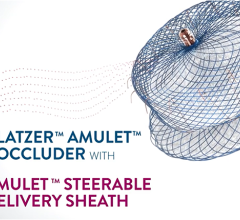
August 17, 2020 — A Northwestern Medicine Bluhm Cardiovascular Institute physician was the first electrophyiologist in Illinois to use a new advanced imaging system during cryo-ablation for atrial fibrillation.
The Philips’ Kodex-EPD system uses dielectric imaging to creates 3-D, high-definition images of a patient’s cardiac structures in real time. A completely new approach to imaging the heart, dielectric imaging offers many benefits in comparison to current approaches, for both cryo and radiofrequency ablation procedures. The technology provides real-time 3-D imaging, reducing the need for X-ray imaging and radiation exposure.
Bradley Knight, M.D., medical director of cardiac electrophysiology at Northwestern Memorial Hospital, was one of the first in the country to use the Phillips Kodex-EPD system. The system offered 3-D, high-definition images of a patient’s heart, during an atrial fibrillation (AFib) ablation procedure Aug. 5, 2020.
“I was impressed that this completely new three-dimensional mapping system, which acts much like a GPS system, can accurately and quickly re-create the anatomy of the cardiac chamber of interest and display the heart’s electrical activity using any electrode pairs placed in the heart,” Knight said.
In cryoablation, imaging is critical to help the physician guide the catheter.
“As the population ages more Americans are being diagnosed with AFib,” said Knight, who is also the Chester C. and Deborah M. Cooley Distinguished Professor of Cardiology at Northwestern University Feinberg School of Medicine. “We are always looking for the safest, most advanced treatments for our heart rhythm patients and I was pleased to partner on this new technology.”
The Kodex-EDP system has both FDA 510(k) clearance and European CE mark.
Northwestern Medicine’s Bluhm Cardiovascular Institute is one of the top 10 national programs for cardiology and heart surgery, according to U.S. News and World Report, and ranked the top cardiovascular program in Illinois and the surrounding states for more than 10 consecutive years.
More than 6 million Americans may have AFib, a heart rhythm disorder when the upper and lower chambers of the heart beat out of synch, either too slowly, too quickly or simply irregularly. Symptoms can include heart palpitations, extreme fatigue, chest pain or shortness of breath, though some with AFib experience no symptoms.
A major risk of AFib is stroke, and one in seven strokes is attributed to AFib.
For more information: news.nm.org/about-northwestern-medicine.html
Related Kodex-EPD Dielectric Imaging System Content:
4 Key Takeaways From the 2019 Heart Rhythm Society Meeting
Philips and Medtronic Collaborate on Image-guided Atrial Fibrillation Treatment


 April 08, 2025
April 08, 2025 







